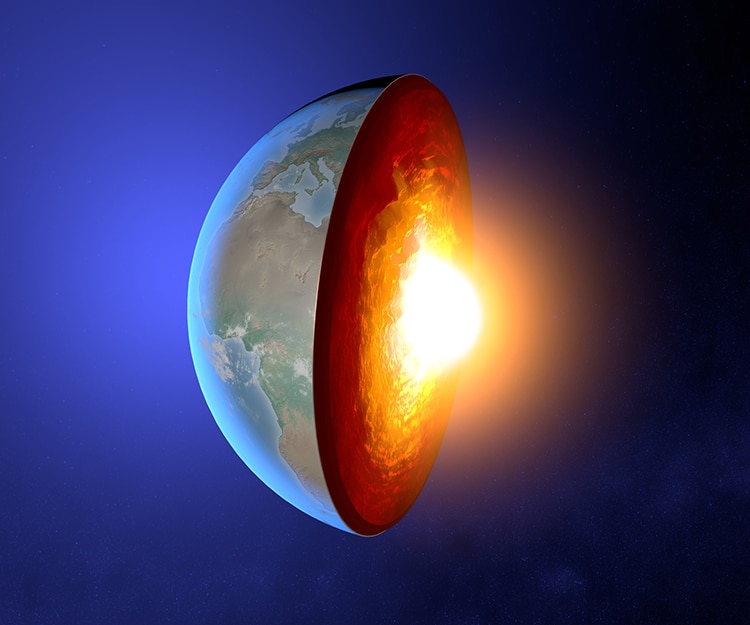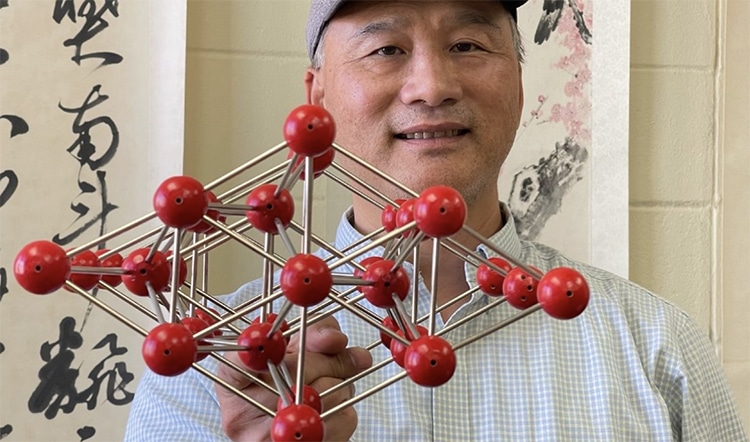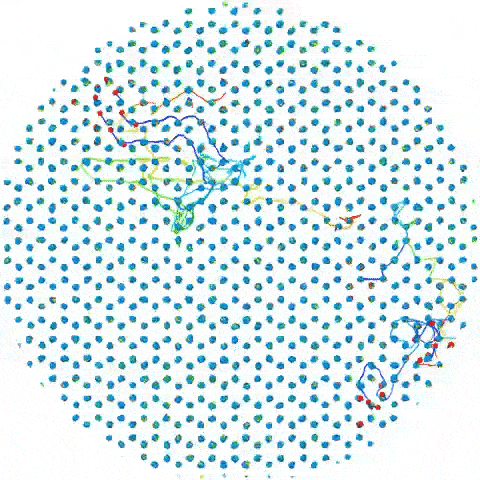
An artist’s conception of Earth’s interior structure. (Photo: VAMPY1/Depositphotos)
Earth has four (simplified) layers, like a giant celestial onion. Outside is the solid crust upon which we walk. Under that shifts the caramel-consistency of the mantel, which is made of iron, magnesium, and silicon. Then, there is the center, which has an inner and outer core. The outer core is liquid metal, whereas the inner core has long been referred to as solid. This inner core is too deep and under too great pressure to sample for study, but a new paper in Proceedings of the National Academy of Sciences has nuanced this understanding. In fact, the paper discovers a form of “collective motion” among the atoms in the inner core which explains recent observations that it’s not quite solid and more like room-temperature butter.
The inner core is mostly ancient iron, held together in a 760-mile diameter ball by extreme pressure. Its iron atoms are arranged in a hexagonal lattice. Although it was long thought to be rock solid, in recent years seismic activity has been studied to suggest the the internal texture is actually softer than previously thought. Researchers have postulated a variety of reasons why this might be, why the material behaves this way despite what would be overwhelming heat and pressure. This new paper suggests a convincing theory.
The researchers solved the problem of studying the core by using a sheet of iron and “shooting it with a fast-moving projectile.” Computers registered the temperature, pressure, and velocity data from the sheet and fed it into an artificial intelligence (AI) program. Unlike previous computer models of only handfuls of atoms, this one “simulated 30,000 atoms to more reliably predict iron’s properties,” according to a statement. They called this model a “supercell.” Within it, the model showed atoms “moving about, changing places while still maintaining the overall hexagonal structure.” This game of molecular musical chairs is known as “collective motion.”
Its discovery explains a lot about the interior of our planet. “Now, we know about the fundamental mechanism that will help us with understanding the dynamic processes and evolution of the Earth’s inner core,” said Jung-Fu Lin of UT Jackson School of Geosciences and a lead author on the paper. His fellow lead author, Youjun Zhang, noted, “Seismologists have found that the center of the Earth, called the inner core, is surprisingly soft, kind of like how butter is soft in your kitchen. The big discovery that we’ve found is that solid iron becomes surprisingly soft deep inside the Earth because its atoms can move much more than we ever imagined. This increased movement makes the inner core less rigid, weaker against shear forces.” Beyond understanding the materiality of the core, this discovery may also have ramifications for understanding Earth’s magnetic fields which are influenced by the core.
Earth’s inner core is surprisingly mushy, which might be explained by a new AI research project.

Jung-Fu with a model hexagonal iron atom lattice. (Photo: Jung-Fu Lin/UT Jackson School of Geosciences)
It demonstrated that iron atoms in Earth’s “solid” core actually move significantly.

Model of how atoms move around a supercell. (Photo: Jung-Fu Lin/UT Jackson School of Geosciences)
h/t: [Live Science]
Related Articles:
Hi-Res Photos of the Moon Highlight a Crater Deeper Than the Grand Canyon
Scientists Think Some Asteroids May Contain Elements Unheard of on Earth
Watch These “Outtakes” of NASA Astronauts Struggling To Walk on the Moon
